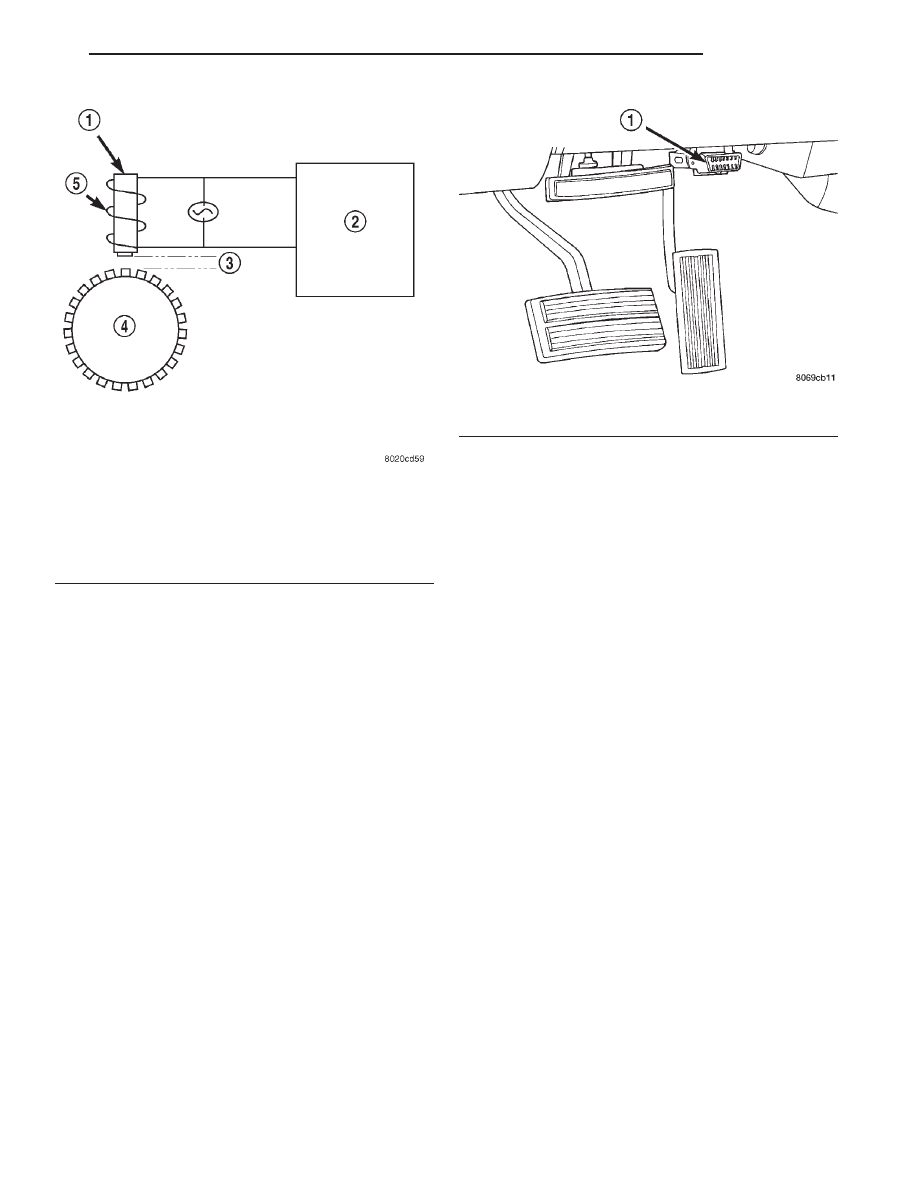Dodge Durango (DN). Manual - part 249

The assembly plant performs a “Rolls Test” on
every vehicle that leaves the assembly plant. One of
the test performed is a test of the WSS. To properly
test the sensor, the assembly plant connects test
equipment to the Data Link Connector (DLC). This
connector is located to the right of the steering col-
umn and attached to the lower portion of the instru-
ment panel (Fig. 4). The rolls test terminal is spliced
to the WSS circuit. The vehicle is then driven on a
set of rollers and the WSS output is monitored for
proper operation.
ABS WARNING LAMP
DESCRIPTION
The amber ABS warning lamp and red warning
lamp are located in the instrument cluster. The
amber ABS warning lamp illuminates at start-up to
perform a self check. The lamp goes out when the
self check program determines the system is operat-
ing normal. The red brake warning lamp is used to
alert the driver of a hydraulic fault or that the park-
ing brake is applied.
OPERATION
If an ABS component exhibits a fault the CAB will
illuminate the ABS warning lamp and register a
trouble code in the microprocessor. The lamp is con-
trolled by the CAB. The CAB controls the lamp send-
ing a message to the instrument cluster.
If red warning lamp is illuminate with the amber
warning lamp, this may indicate a electronic brake
distribution fault.
The red warning lamp will illuminate if an ABS
component exhibits a fault and the amber lamp is
burned out.
DIAGNOSIS AND TESTING
ANTILOCK BRAKES
The ABS brake system performs several self-tests
every time the ignition switch is turned on and the
vehicle is driven. The CAB monitors the systems
input and output circuits to verify the system is oper-
ating correctly. If the on board diagnostic system
senses that a circuit is malfunctioning the system
will set a trouble code in its memory.
NOTE: An audible noise may be heard during the
self-test. This noise should be considered normal.
NOTE: The MDS or DRB III scan tool is used to
diagnose the ABS system. For additional informa-
tion refer to the Antilock Brake section in Group
8W. For test procedures refer to the Chassis Diag-
nostic Manual.
Fig. 3 Operation of the Wheel Speed Sensor
1 – MAGNETIC CORE
2 – CAB
3 – AIR GAP
4 – EXCITER RING
5 – COIL
Fig. 4 Data Link Connector - Typical
1 – 16–WAY DATA LINK CONNECTOR
DN
BRAKES
5 - 43
DESCRIPTION AND OPERATION (Continued)